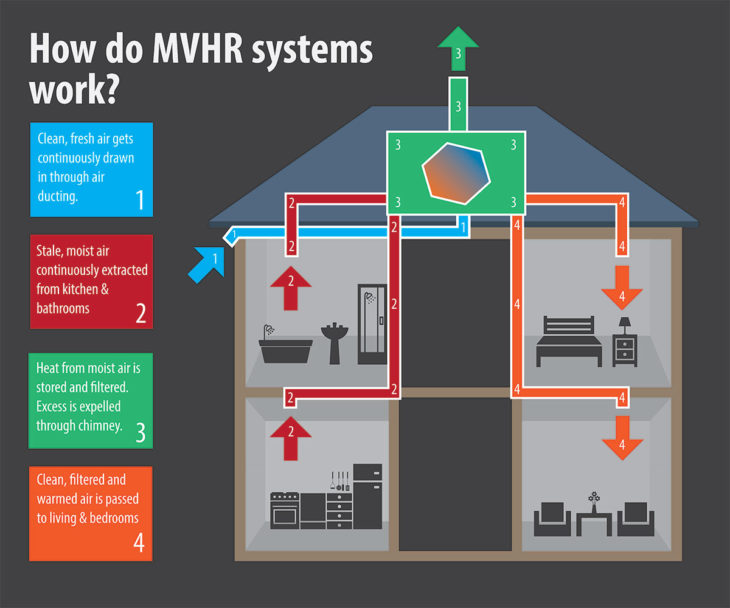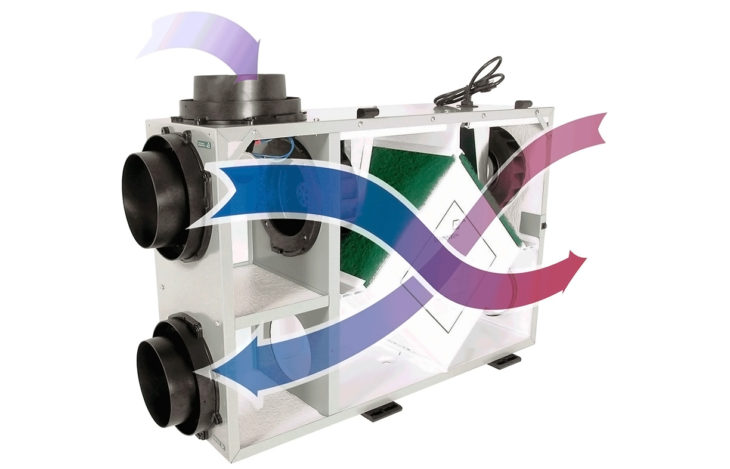More and more homeowners are looking for ways to reduce their energy bills and the carbon footprint. The good news is that with a bit of effort, it can be done.
Many buildings are now having systems like solar panels and batteries in order to reduce their home’s energy dependence. Though these systems can be very helpful, their contribution can often be intermittent, only producing enough power on bright days and sometimes contributing little. They also only offer-long term returns on the investment, which can often be quite costly and change the appearance of a house considerably.
A much more popular and cost-effective option is to use Mechanical Ventilation with Heat Recovery, or MVHR, to reduce their heating bill and their carbon footprint with it.
In this quick guide, we are going to look at the MVHR systems and what a heat recovery system has to offer your home.
What is Mechanical Ventilation and Heat Recovery?

Source: County Online
Most houses have a hot water boiler that is powered by natural gas or electricity. Mechanical Ventilation and Heat Recovery systems use a device called a heat pump to warm fresh air that is drawn from outside, and pump it through your home using ducts and vents rather than pipes and radiators.
What Does it Take to Install?
Installing an MVHR is actually quite simple and can be completed quite quickly in most homes. The MVHRs can be self-installed by a competent do-it-yourself enthusiast, but there are many qualified installers across the country that can make switching to a mechanical ventilation and heat recovery setup a breeze. Click here to learn more.
If you have an existing hot water boiler, you may find removing radiators and pipework from rooms and hallways gives your home a whole new look and much more space.
How Much Money Can You Save with a Heat Recovery System?

Source: Renew
An MVHR is much more energy efficient than hot water boilers. By heating the air in rooms directly, and maintaining temperature with insulation and by controlling airflow from outdoors, the property will use a lot less energy to keep you warm inside.
Some homeowners who have installed a MVHR have seen reductions of up to 95% in their heating bills, and many report savings over around 75% compared to heating their property with a gas-powered hot water boiler.
Mechanical Ventilation and Heat Recovery systems are a fantastic way to save money on bills and help you do your part to protect the environment for future generations.
Compared to traditional heating setups like hot water boilers, MVHRs are incredibly energy efficient and only marginally more expensive to buy and install. An investment in a mechanical ventilation and recovery system quickly pays for itself, as the savings you make on your bills soon add up. Anyone that is replacing a heating system, or installing a new one should consider a MVHR.
